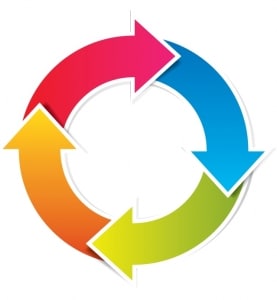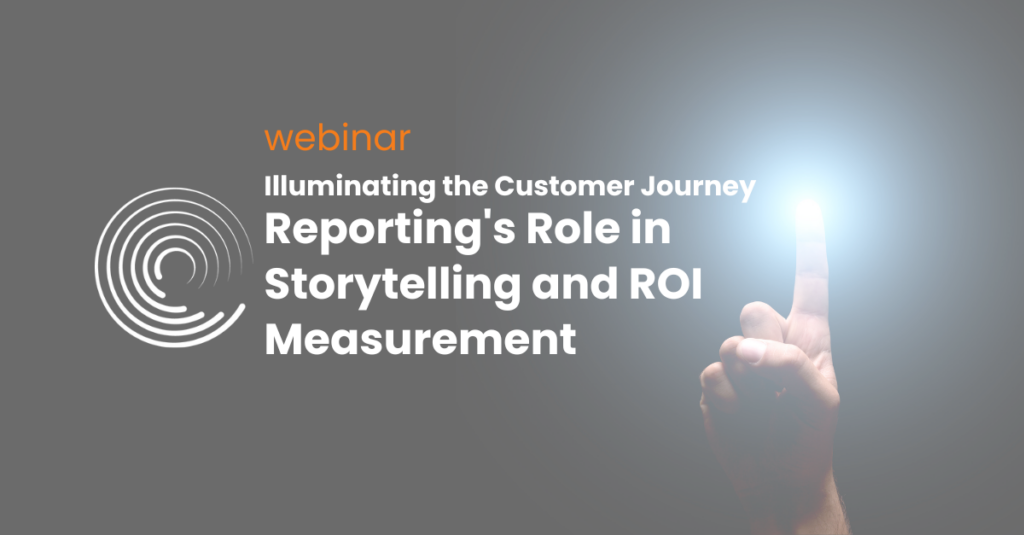
I often get asked how closed-loop reporting (CLR) really works, what a marketer has to do to reap the benefits, and why is there so much buzz around this hot topic? Closed-loop reporting gives marketers insight into which of their marketing efforts are most influential to revenue — providing visibility into lead activity after Marketing passes off to Sales, thereby “closing the loop.” In essence, it helps marketers determine whether it was the million-dollar event or the $20K paid search campaign that moved the needle the most.
Marketers need a comprehensive dashboard that provides real-time insight into the health of their marketing initiatives. This view allows us to make educated decisions on the best investments for our marketing dollars.
Using Salesforce, there are two key areas of closed-loop reporting: campaign management and opportunity management. When used correctly, these tools give marketers the necessary data to make informed decisions on where to invest their budgets.
Setting up Closed-Loop Reporting (CLR)
Campaign Management
Marketing campaigns come in all shapes and sizes, ranging from ‘drip’ email campaigns, to Google Adwords, to high-level executive dinners. When set up properly, each campaign should carry all of the data points that you want to be able to report on: date ranges, region, product category, etc. Arguably, the most important piece of data is the cost attribution. Consider if you have two events with the same influenced revenue. Assuming that you’re operating on limited budget, you’d be hard pressed to choose the more expensive event if they resulted in the same outcome.
The second part of campaign management is the creation of campaign members, which are records that associate a contact or lead to a campaign. By creating these campaign members, you have insight into who was part of which marketing effort. With this functionality, you not only have insight into what campaign someone was associated to, but also the date and their status, thereby allowing you to define when a campaign member has taken a further response action, such as attended an event rather than just an RSVP.
For some lucky marketers, the campaign management piece of CLR is automated. By using a marketing automation platforms like Eloqua, Marketo, Pardot, or ExactTarget Marketing Cloud, you can set rules around creating and updating campaign member status.
Opportunity Management
Opportunity management is where marketers can lose some of that control they had over campaigns and campaign members—though they can certainly influence its use. Opportunities hold the revenue numbers that they want to associate to campaigns. In order to close the loop, sales teams need to leverage the “contact roles” object.
Pictured in the image below, contact roles are what connect opportunities to contacts, thereby closing the loop so we can attribute revenue to campaigns. Learn how Bluewolf drives adoption of Contact Roles within their own organization to achieve closed-loop reporting.
Measuring Closed-Loop Reporting
Once you’ve set up a working model with trustworthy data, you can start pulling reports on your efforts. There are two reports worth noting: Campaign ROI and Campaign Influence.
Campaign ROI
This report associates one opportunity to one campaign using the “Primary Campaign” field on the opportunity. This field can either be manually populated, or automatically populated with the last campaign a contact was associated to upon conversion. Even if that contact was associated to ten campaigns, the revenue in an ROI report will only go to the one campaign.
Campaign Influence
This report will associate the revenue of one opportunity to multiple campaigns using all associated campaigns. These campaigns are associated to the opportunity via contact roles. When a lead is converted into a contact and opportunity, their associated campaigns are linked to the opportunity. This means that a single opportunity that closed for $1000 will show as influence in all the to which campaigns it was associated. When looking at campaign influence reports, the revenue will be counted multiple times.
Campaign influence not only enables Sales and Marketing to be on the same page as to which programs to run, but it also prevents campaign data from getting siloed in a marketing automation tool. Plus, it provides access to the full power of Salesforce reports and dashboards to show your campaign performance data in real time.
By harnessing the power of closed-loop reporting, your marketing team, as well as your entire organization, can gain critical insight into campaign performance—informing future budget and effort spend.
Interested in learning more about what closed-loop reporting can provide for your organization? Get in touch with Bluewolf.
Learn more about best practices in designing and implementing your lead lifecycle in Salesforce. Measure your lead progression with automated funnel stage tracking. Check out the Best Practices for Designing a Lead Lifecycle in Salesforce white paper.




